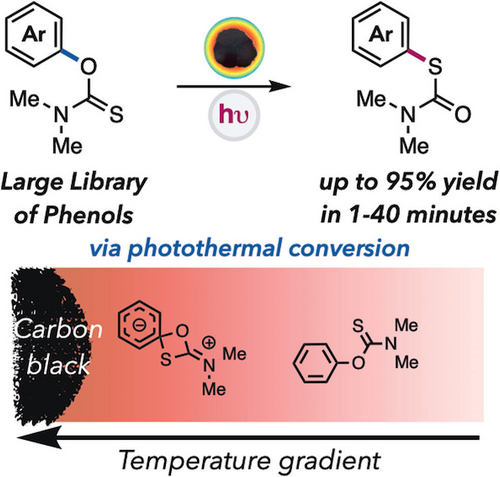Angew. Chem. Int. Ed. 2023, e202308648
Communication
Publication Abstract
The Newman Kwart Rearrangement (NKR) offers an efficient and high-yielding method for producing substituted thiophenols from phenols. While an industrially important protocol, it suffers from high activation energy barriers (35-43 kcal/mol), requiring the use of extreme temperatures (>200 °C) and specialty equipment. This report details a highly efficient and straightforward method for facilitating the NKR using photothermal conversion. This underused, unique reactivity pathway arises from the irradiation of nanomaterials that relax via a non-radiative decay pathway to generate intense thermal gradients. We show carbon black (CB) can be an inexpensive and abundant photothermal agent under visible light irradiation to achieve a facile NKR under mild conditions. The scope includes a wide array of stereo- and electronically diverse substrates with increasing difficulty of rearrangement, including BHT and BINOL as effective substrates. Furthermore, we demonstrate the unique application for temporal control in a thermal reaction and tunability of thermal gradients by modulating light intensity. Ultimately, photothermal conversion enables high-temperature reactions with simple, visible light irradiation.

